An English Haunting review
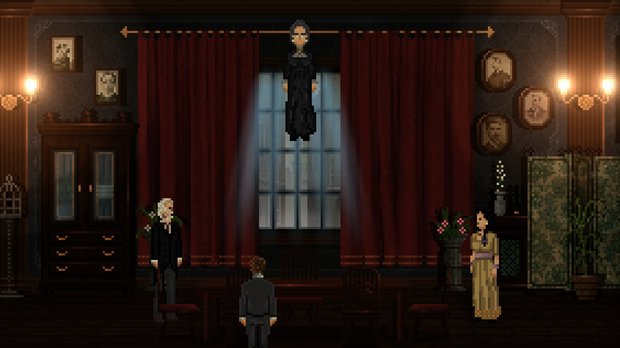
- 0 Comments
Compelling paranormal pixel art mystery in early 1900s London would have benefited from characters with greater substance
As I sit down to write this review just a week after finishing An English Haunting, I realize that I cannot call to mind the name of the protagonist or even how the game ends. My rapidly aging brain surely shoulders much of the blame, though I suspect it also cuts to my feelings about my experience. The second pixel art adventure by Spanish developer Postmodern Adventures, a ghost-hunting yarn set in early twentieth-century London, is certainly a pleasant enough experience buoyed by above-average production values and a satisfying level of gameplay challenge. Yet an unmemorable cast of characters—replete with enough exposition to make a Bond villain blush—make it difficult to give it an enthusiastic recommendation.
The year is 1907. You control Professor (checks notes) Patrick Moore, an esteemed scientist at a nameless London University whose pet project is to prove the existence of ghosts using the scientific method. The dean interrupts your most recent lecture to inform you that your colleague and friend Professor Ward has stolen all the university’s money earmarked for paranormal research and has disappeared. You’re given 72 hours to find the money and conclusively confirm your theories in order to keep your job. Worse yet, your socialite fiancée soon dumps you out of embarrassment over your reputation as a ghost hunter. Without a home and without time to look for one, you must follow some modest leads to track down your friend and save your livelihood.

Controlling the game is easy breezy, requiring only the mouse and one button. Hovering over hotspots will give you the name of what you’re looking at, and left-clicking will either prompt Patrick to interact with the item or provide his thoughts on what he’s seeing. Inventory is similar, with only a couple of clicks required to use objects on the screen or with each other. Talking with other people works much the same, with conversation trees to exhaust in any order you please. Quick travel is also available by double-clicking room exits.
As the conversations (with one small exception) contain no puzzles themselves, the game’s entire challenge lies with the inventory obstacles, which range from easy to moderate difficulty. You rarely carry more than a handful of items at a given moment, and few are used more than once. Thankfully, some forethought is generally required as there are often a half-dozen or so locations to visit at any given time. That said, I was never stuck for longer than fifteen minutes and required no hints for the duration.

For the most part, An English Haunting’s tasks are straightforward, with a few fetch quests to be completed. A couple are quite satisfying to work out, my favorite being how to become a member at an elite paranormal London club. Still, a few are frustratingly contrived. The most egregious example is when you must find a way to light a lantern in order to explore the basement of a (supposedly) haunted mansion. The lengths to which Patrick must go to in order to procure a flame is ridiculous. Multiple characters in the game prevent Patrick from using their candles, as though he were asking to borrow their first print editions of Oliver Twist. The eventual solution is overly complicated, especially considering that Patrick could have presumably bummed a match off of at least one of the five million people in the city.
The pixel art graphics do a good job of conveying foggy post-Victorian London. Each area is highly detailed, and even though you cannot interact with everything on the screen, the places feel less like set pieces and more like lived-in locations. The streets are filled with pedestrians and horse-drawn carriages passing by. The docks see boxing matches and gambling, and are frequented by fishermen, ruffians, and hungry pelicans. The bar has lonely drunks, a dart board, and walls filled with signs and photos of patrons. The animation consistently gets the job done without generally standing out, except during the game’s few encounters with paranormal activity, when it ups its game with some impressive displays of telekinesis that effectively startled me.
My absolute favorite place to visit (and unnecessary to complete the game) is the local horror book store. Patrick can read some original short horror stories, and the shop’s stuffy proprietor (who thinks all of Arthur Conan Doyle’s non-horror writings are drivel) will challenge you to a quite lengthy quiz to test your knowledge of the genre. There’s no reason for any of this to exist in the game other than for amusement, and I loved every detail.
Audiophiles should also be pleased. Many popular phonograph songs from the first decade of the twentieth century are used, including numbers from the operas La bohème and Carmen. Providing background in the local bar is my favorite song “Poor John,” by Ada Jones, a cheeky and amusing tune in which she argues with the overbearing mother of her boyfriend. Blissfully, the soundtrack is used intentionally and sparingly, allowing the ambient noise of horse trots, birds cawing, and the low din of the industrial sector to take over. The game’s few tense moments of horror are complemented by a sinister crescendo of instruments and never overstay their welcome.
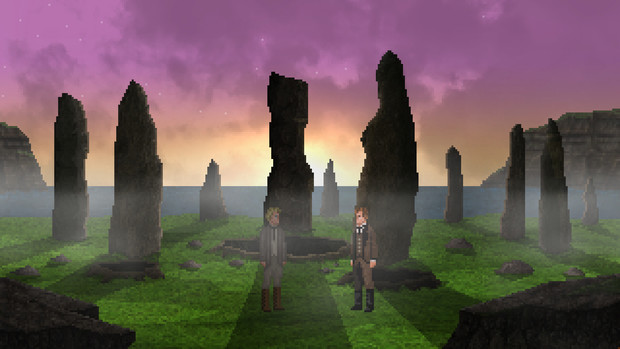
Patrick is seemingly well-known throughout town, at least in the more affluent areas. His reputation precedes him, facing reproval from both the science community for chasing ghosts and from the spiritualist community for his regular debunking of con artists and judgment of their naïve followers. One of these con artists, Beatrice Shaw, turns out to be an ally and helps Patrick with the science, constructing his prototype to enhance paranormal energy while sending him out for parts. While doing so, Patrick will interview anyone who may have seen Professor Ward. Naturally, your two goals will eventually converge.
With its decent puzzles and solid production values, I was expecting to enjoy An English Haunting more than I did. When I reflected back on what left me mostly indifferent about the story, I realized that I just didn’t care about a single person in the game, including cameos by two prominent celebrities of the time (and a third cameo by a real spiritualist of the era). Given the lack of voice acting, it’s imperative that people’s personalities emerge from distinctive personal histories, dialogue, and mannerisms. And it just isn’t there. Patrick Moore is indistinguishable from a generic hero; all we know about him is his career and being dumped by a jerk the audience just met thirty seconds prior. Thus his fate as to whether or not he keeps his professorship holds little tension. We’re supposed to feel how much Patrick cares for the missing friend we’re looking for, but we know almost nothing about him or his history with the protagonist.
The dialogue is the game’s biggest problem. There are little quibbles, such as characters speaking anachronistically (e.g. post-traumatic stress) or announcing their feelings to the player (“I’m so nervous!”). Mainly, though, they just never shut up. Several important scenes are nothing but the characters info-dumping and yammering about their feelings without any input from the player. When Patrick connects with Beatrice, I believe I clicked through a good five minutes of dialogue. It appears the author even knew the risk of doing this, as a section late in the game involves another character recalling events from the previous couple days. Rather than hearing it all at once, you travel back in time to play as that person reliving their own version of the same events. If only similar techniques had been implemented more regularly.
I have mixed feelings about the endgame. There’s some mild tension (which might have been heightened if there was any risk of dying) and the loose story threads come together nicely. But the final few puzzles are painfully easy, with the last one requiring you to use the only item you have left in the only obvious way, before another five minutes of excessive dialogue closes things out. While the primary plot resolves itself, the tale ends with a cliffhanger of sorts that (thankfully) doesn’t undermine the closure provided here or require a follow-up game.
Final Verdict
Historical fiction wonks may get the most out of An English Haunting, as it explores a period of great spiritualism in London at the turn of the twentieth century in some depth while highlighting the works of several horror writers of the time (with one of them making an appearance!). The graphics and soundtrack amplify the mood consistently, and the horror present is generally effective without being overdone. Those who demand high-quality character arcs with gripping dialogue may have a more difficult time immersing themselves. However, the game is short enough (about six hours or so) and filled with enough engaging puzzles that most players will find enough enjoyment to make it worthwhile. If Patrick Moore does resolve the cliffhanger in a future adventure, let’s hope he becomes the more compelling hero that this otherwise solid production deserves.
Hot take
Focusing more on the story than the spooks (though the spooks are good when they materialize!), An English Haunting is a solid, user-friendly paranormal tale with strong production values, even if it lacks the compelling characters and dialogue of the best horror fiction.
Pros
- Simple, intuitive gameplay that maintains an acceptable level of challenge
- Wonderful soundtrack is emblematic of the time and heightens the mood
- Colorful London locations strengthened by some effectively creepy animations
Cons
- Unmemorable characters, including the protagonist
- Excessive dialogue with several info dumps that slow down the fun
- Several puzzles are too contrived and take you out of the story
Beau played An English Haunting on PC using a review code provided by the game's publisher.


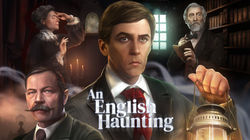
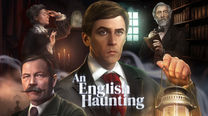
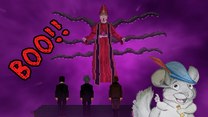






0 Comments
Want to join the discussion? Leave a comment as guest, sign in or register in our forums.
Leave a comment